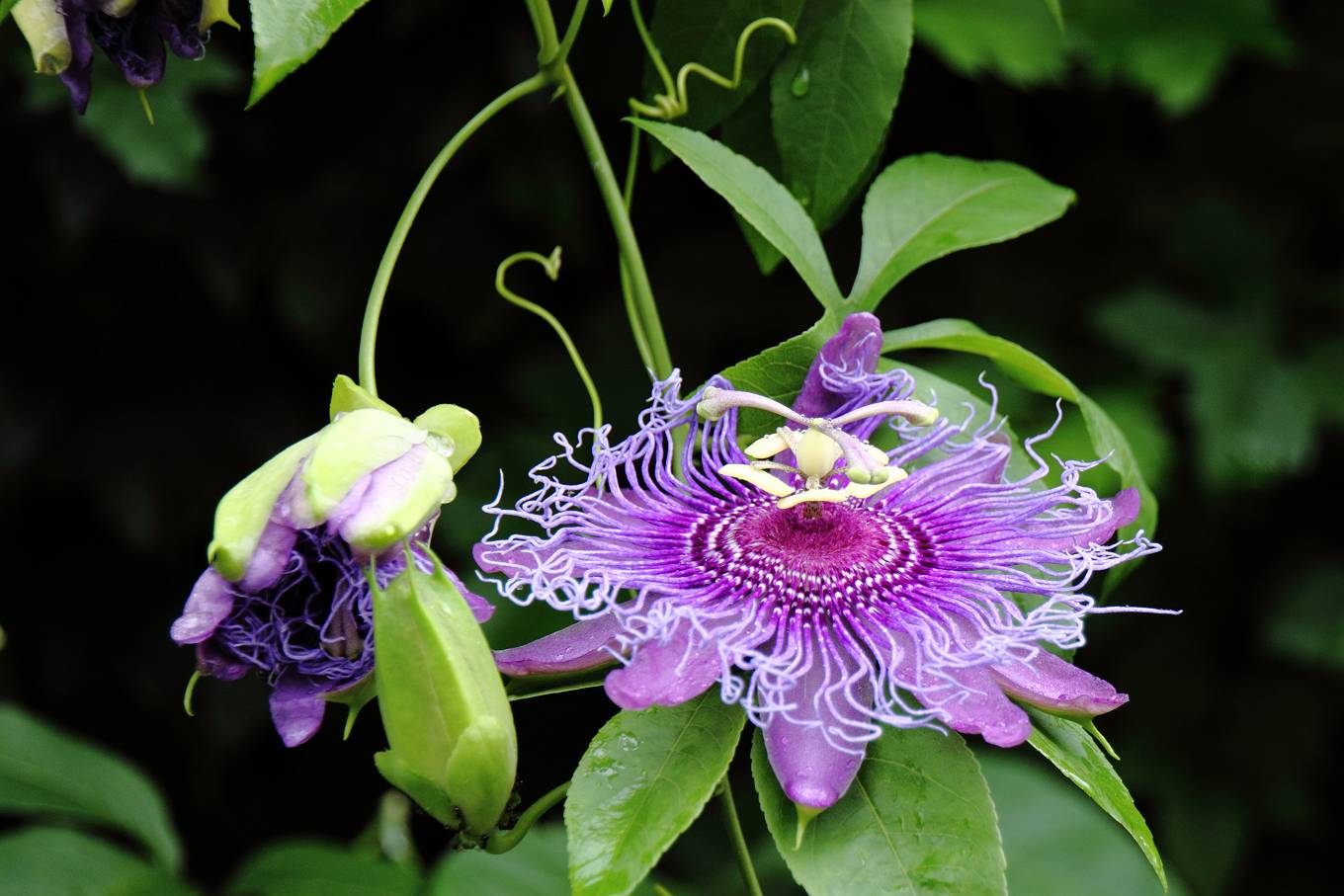
How many of you has seen this beautiful flower with a subtle charm before?
And how many of you knows that after the flower is scattered, a round-shell fruit called a passion fruit can be harvested?
Not me!
As I am from Yamanashi Prefecture, which belongs to temperate latitudes of the globe, I had seen neither a passion flower or a passion fruit before I came to Thailand. Due to cold winter in my town, tropical plants don't grow naturally in the area.
When my parents were little, tropical fruits were hardly seen in market, too as transportation system was not good at that time. Even common fruits such as bananas used to be very very expensive in my town.
Passion tree is a vine plant that is native to Paraguay, Brazil and northern Argentina
Common names include Passion Fruit (UK and US), Passionfruit (Australia and New Zealand), Granadilla (South America and South Africa), Pasiflora (Israel), Parchita (Venezuela), Maracujá (Brazil, Ecuador, Peru, Paraguay), Maracuyá (Peru, Colombia, Panama), Chinola (Dominican Republic), Lilikoi (Hawaiian), Magrandera Shona (Zimbabwe), Markisa (Indonesian), and Lạc tiên, Chanh dây or Chanh leo (Vietnamese).(from Wiki, Passiflora edulis)
Here in Thailand, it is called 'sawa rot'.

It is cultivated commercially in frost-free areas for its fruit and is widely grown in many parts of the world such as
India, Sri Lanka, New Zealand, the Caribbean, Brazil, Colombia, Ecuador, Indonesia, Peru, California, Florida, Haiti, Hawaii, Argentina, Australia, East Africa, Mexico, Israel, Costa Rica, South Africa and Portugal.
For those who are not familiar with this fruit.
The passion fruit is round to oval, either yellow or dark purple at maturity, with a soft to firm, juicy interior filled with numerous seeds. The fruit can be grown to be eaten or for its juice, which is often added to other fruit juices to enhance the aroma. The fruit shown are mature for juicing and culinary use. For eating right out of the fruit, the fruit should be allowed to wrinkle for a few days to raise the sugar levels and enhance the flavor.The name, 'passion fruit' is actually nothing to do with a strong emotion of feeling, but something more religious.
The passion fruit has had a religious association as reflected by the name "passion" given to it by Catholic missionaries who thought that certain parts of the fruit bore some religious connections. These missionaries (who were joined by the Spanish Conquistadors in South America), saw a way of illustrating the Crucifixion:
- The three stigmas were to reflect the three nails in Jesus's hands and feet.
- The threads of the passion flower were believed to be a symbol of the Crown of Thorns.
- The vine's tendrils were likened to the whips.
- The five anthers represented the five wounds.
- The ten petals and sepals regarded to resemble the Apostles (excluding Judas and Peter).
Fujifabric's 9th single released on the 5th September 2007, is 'Passion Fruits'.
The song can also enjoyed in their 3rd album, 'Teenager'. (The 9th song)
The name of the song gives an impression of "foreign-origin" of the song, which Shimura kun aimed at - "unidentified nationality" and "a mystery time" (not knowing in which period the music was made).
Shimura kun said in his interview in FAB BOOK, "this is the song which tried to satisfy our fans' requirements, identities of Fujifabric's music". It is a wonderful song with a mystery charm, exactly like the fruit itself.
"This is like a fun song, which sounds a bit like a Pakistani popular song, but it is Fujifabric which makes a song like 80's. It was the time that the band was looking for what is an identity of Fujifabric's music.".
'Passion Fruits' was released between 'Surfer King' and ' Wakamono No Subete' ('All About The Youth').
What Shimura kun aimed at were expressed through both in music and the lyrics.
Let's take a close look at the lyrics and the music in the next post.
Today's song is 'Passion Fruits'.

No comments:
Post a Comment